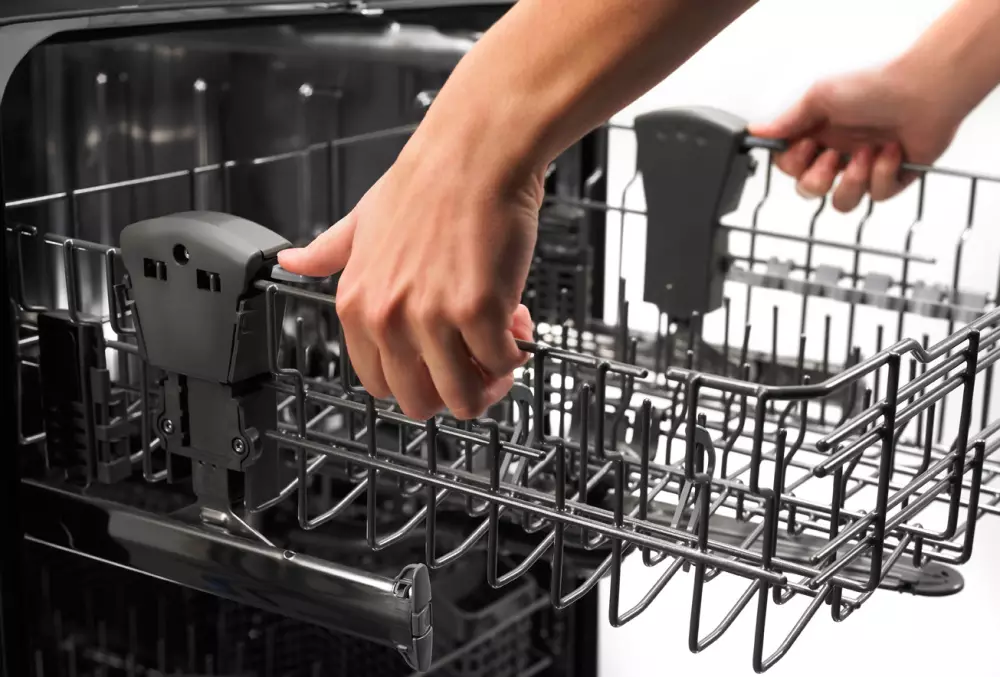How to Clean an Espresso Machine: The Ultimate Guide to Keep Your Machine Functioning Well
Espresso coffee machines are critical devices in any coffee shop, restaurant, or even at your house. These machines are also surprisingly delicate and can be challenging to maintain, and you need to know what you're doing. If you're looking for a way to keep your espresso machine performing at its best, read on.
This post will walk you through exactly how to clean an espresso machine. It's not hard, and it's essential for keeping your device in good shape so that it can make delicious espresso for years to come.
If you're a coffee lover, you know the struggle of not having an espresso machine that's up to snuff. You've probably even considered buying a new device, but with so many best espresso machines on the market, it can take time to know which one is right for you, especially if you're looking for something that will last.
The struggle is real. And it's not just limited to coffee lovers. Restaurants, cafes, and bars worldwide use espresso machines to produce delicious drinks that bring people together and make them happy.
But like any other piece of machinery, espresso machines need regular maintenance from you or a house cleaning service to continue producing great drinks for years and years to come.
If this sounds like something you would like to learn more about, keep reading!
In this article, we'll talk about everything you need to know on how to keep an espresso machine working so well so that you can keep yours running smoothly no matter how long it's been since they were last cleaned out!
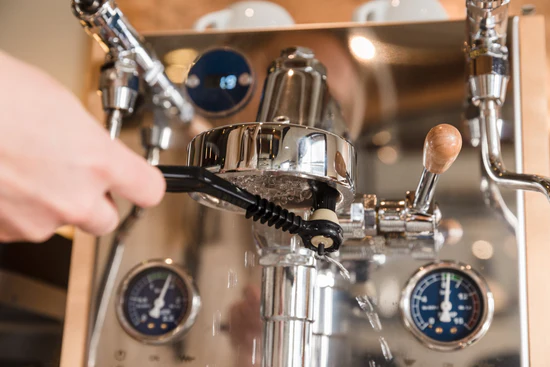
What You'll Need
Instructions
When descaling, flush the machine with a full tank of water and a cleaning solution to eliminate calcium deposits built up inside the piping and on the heating element.
If used daily or has hard water, you should descale your espresso machine more frequently than every three to four months.
1. Choose a descaling solution
You get to choose what you'll use to remove the scale. Lemon juice, vinegar, and citric acid are natural ingredients.
It would be best if you made it apparent that any commercially produced descaling solutions you choose to employ, such as powders and tablets, are also all-natural.
You will establish a habit with this and have an effective go-to descaling solution. You might decide to use vinegar or citric acid to make your homemade espresso machine descaler, or you might choose to buy a descaling product.
2. Prepare the espresso machine
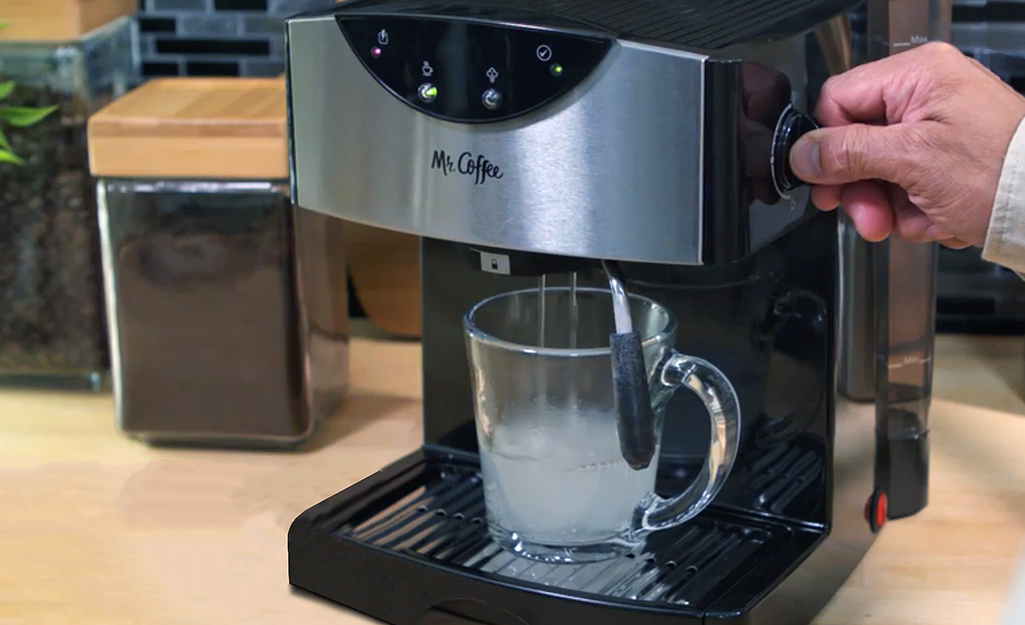
Your espresso machine should start up and reach full boiler pressure. Close the hot water valve, let it cool, and then turn it back on.
Pulling the brew group lever allows water from the boiler to flow via a hot water dispenser. Close the hot water valve after all the water has been released.
3. Mix your descaling solution
Depending on whether you use a commercial descaling or a DIY cleaning solution, there may be an additional step in cleaning coffee machines.
If you're using vinegar, dilute it with water. If you're using citric acid, combine the powder with water. If you're using a commercial product, make your descaling solution following the directions on the packet. Make sure to stir the fluid thoroughly when using powders or pills to ensure proper dissolution.
After adding it to the machine's water reservoir, turn on your coffee maker. The boiler will then be filled with the descaling solution once the pump is turned on.
4. Descale rinse the espresso machine
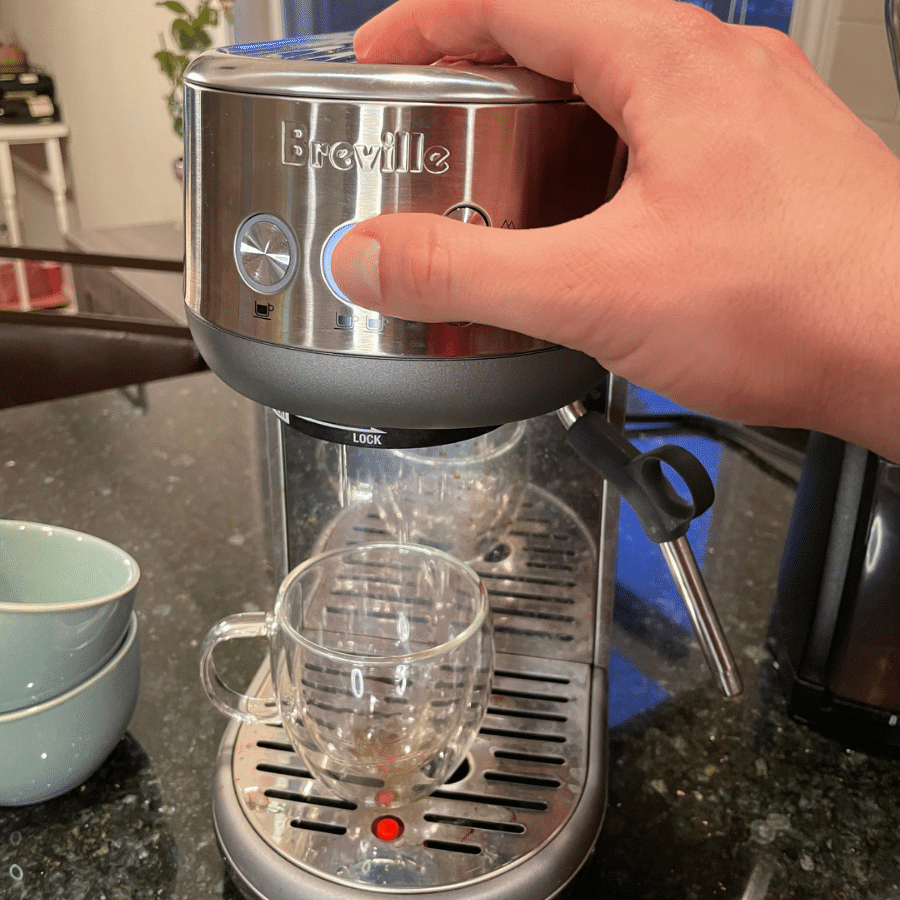
As soon as you've inserted the portafilter with the blind brew basket filter into the group head, press the brew group lever three times for 20 to 30 seconds. After each operation, the expansion valve will be descaled if the lever is lowered to the lowest setting.
Leave the area and give the boiler some time to work on the descaling solution. Run water through the brew head one more to flush the system of the remaining descaling solution after 20 minutes.
Turn off the appliance and let any remaining solution drain by operating the hot water valve.
5. Rinse out the descale rinse
Once you've completed the descaling rinse, remove the water tank and give it a warm water rinse. Replace, fill, and restart the machine to allow the water pump to refill the boiler.
Run the machine three times for 20 to 30 seconds each time, then attach the blind filter to rinse the expansion valve. Remove the blind filter from any heat exchangers you may have, and then run the heat exchanger for 60 seconds.
It is done to ensure that your machine is completely free of any remaining citric acid, vinegar, or other commercially available descaling product. Your morning espresso shouldn't taste like vinegar, citric acid, or any other descaling agent.
6. Clean the portafilter
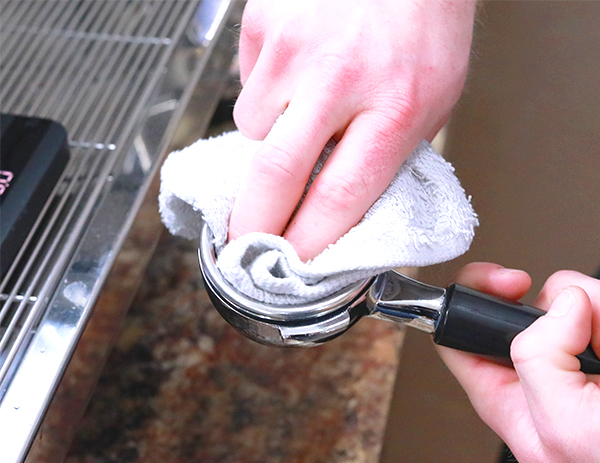
After removing the shot, wipe the portafilter basket immediately. Remove the portafilter's grounds, and use a clean, dry towel to wipe the filter basket.
Coffee grounds and coffee oils will stick to the shower screen and filter basket if the coffee puck isn't removed from the machine or portafilter.
Remember that unused areas also contain water, making them ideal bacterial spawning grounds.
7. Rinse the group head
Rinse the brew group or group head before and after brewing an espresso serve. Simply discharging some water without turning on the portafilter is all that is required to clean the group head. It will effectively remove any used grounds that have become adhered to the mesh inside the brew group.
In addition to warming the brew group, hot water will prevent your coffee from being more acidic as it brews.
8. Clean the espresso tamper
Before making another serving of coffee, if your coffee machine has a built-in tamper, ensure no grounds are remaining in it from the previous time you tamped coffee.
Only tamp a fresh batch of coffee if you're positive the espresso tamper's surface is even and dry and there's nothing attached.
If you ignore these things, the resulting cup will undoubtedly show it.
9. Cleanse the steam wand
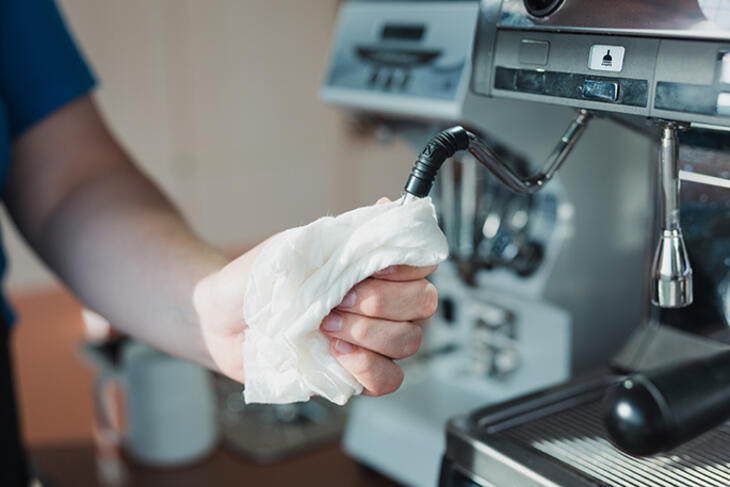
It is essential to clean the steam wand since milk buildup might harm the steam wand. Before and after streaming the milk, the steam wand should ideally be cleaned.
Before steaming, you can briefly turn on the steam wand. This will guarantee that no residual water gets into your milk. Once you've finished steaming, clean the wand with a moist cloth and repeat the purging process for one to two seconds.
Additionally, the steam wand's tip needs to be cleaned. Most frequently, milk collects at the tip, blocking the apertures and lowering the stream pressure. The steam wand's tip should be taken off and left in a solution of warm water and detergent for at least 20 minutes.
10. Clean the outside of the coffee machine
Some splashes from the brewing process may end up on the grate or body of your espresso machine. Removing these splashes as soon as possible is best because doing so after they have dried will be much more challenging.
Although it won't change the taste of your coffee, a clean coffee machine demonstrates respect for both the brewing method and the beverage itself.

It's Time to Make Yourself a Better-Tasting Espresso!
Cleaning your espresso machine ensures you get the best flavour out of your coffee. But it's also about ensuring that your device lasts as long as possible. Cleaning your espresso machine takes a little time and effort, so make sure you get on top of it.
If you follow these steps, your espresso machine will be ready next time you want to make yourself a delicious cup of espresso!
You can also check out our ultimate how to clean a kitchen guide to get your kitchen sparkling and ready for the holiday season.
FAQs
Why do you need to clean an espresso machine?
Your espresso machine needs to be descaled since water includes minerals and other impurities that, over time, can impair its functionality and the flavour of your coffee.
Your espresso machine's pressure and heat, which aid in the extraction of the flavorful coffee oils and chemicals, also contribute to an increase in the amount of scaling left in coffee makers after the procedure.
Regularly descaling your coffee maker can keep the piping and working components clear of hazardous bacteria, limescale, and coffee residue that can accumulate over time. Descaling solution rinses can extend the life of often replaced parts like the steam wand and add years to the lifespan of your espresso machine.
How often should you clean your espresso machine?
Espresso machines must be cleaned regularly, just like all other coffee-making equipment. Some treatments will need to be done daily, but others can wait until once a week or once a month.
You should fully clean your machine once a week, or at the very least, once a month, depending on how frequently you brew coffee. Professional baristas who work in coffee shops do that frequently, but it's improbable that you would brew so much coffee at home that it would require that much upkeep.
Is vinegar good for cleaning an espresso machine?
No, vinegar is not suitable as a descaling solution in cleaning an espresso machine. The natural acids' reactions of vinegar with the scale and bacteria in the coffee machine differ from those of the descaling solution. The purpose of the descaling solution is to prevent damage to the functional components of your espresso machine by removing only the limescale.
While vinegar will aid in descaling, it will gradually corrode the metal parts of your coffee machine, particularly those machines with aluminium tanks. Even worse, any vinegar residue that isn't thoroughly rinsed out can seriously affect the flavour of your coffee.
